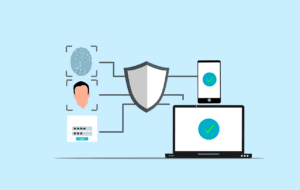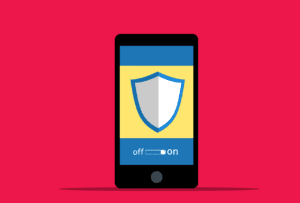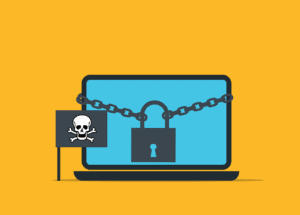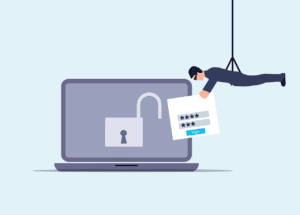Gamers haven’t really been the focus of cybersecurity for a long time. You mostly hear about attacks on businesses. Or stolen personal data due to phishing attacks. But gamers are not safe from hackers targeting them.
As cyberattacks continue to escalate, gamers have become prime hacking targets. Malicious actors seek to exploit vulnerabilities in the digital realm. The gaming industry continues to expand. Also, more users immerse themselves in virtual worlds. As this happens, the risks associated with cyberattacks on gamers are on the rise.
Cyberattacks on young gamers increased by 57% in 2022.
Younger gamers playing games like Minecraft, Roblox, and Fortnite are particularly at risk. They’re also often playing on their parents’ devices. Data that holds the interest of hackers fills these devices.
Next, we’ll delve into the reasons behind the increasing threat landscape. As well as discuss ways for gamers to safeguard themselves against potential threats.
The Gaming Boom and Cybersecurity Concerns
The exponential growth of the gaming industry has brought entertainment to millions. But it has also attracted the attention of cybercriminals looking for lucrative opportunities.
According to an MSN article, cyberattacks on gaming platforms are becoming more prevalent. Hackers are deploying sophisticated techniques to compromise user accounts. As well as stealing sensitive information and disrupting online gaming experiences.
Stolen Credentials and In-Game Items
What’s one of the primary motivations behind these cyberattacks? It’s the prospect of acquiring valuable in-game items. As well as the account’s credentials. Virtual goods, such as rare skins, weapons, or characters, hold real-world value. Hackers exploit weak passwords and security loopholes. This allows them to gain unauthorized access to user accounts. Once they do, they pilfer these coveted items for illicit gains.
Ransom Attacks on Gaming Accounts
Ransom attacks have become increasingly prevalent in the gaming world. In these instances, cybercriminals gain control of a user’s account. They then demand a ransom for its release. Hackers often demand the ransom in untraceable cryptocurrency. Gamers may follow the hacker’s demands. As they do not want to lose a meticulously curated game profile. As well as their progress and achievements.
Disruption of Online Gaming Services
Beyond individual attacks, hackers are now targeting gaming platforms. Their intent is to disrupt online services. They launch DDoS (Distributed Denial of Service) attacks to overwhelm servers. This renders them inaccessible to legitimate users.
This frustrates gamers. But can also have severe financial repercussions for gaming companies. They must grapple with the costs of mitigating these attacks. As well as the potential revenue losses.
Understanding the Motivations of Cybercriminals
Effectively combating the rising tide of cyber threats in gaming takes knowledge. It’s crucial to understand the motivations driving these attacks. Virtual economies within games have created a lucrative market for cybercriminals. Additionally, the anonymity of the gaming community makes gamers attractive targets.
Safeguarding Your Gaming Experience: Tips for Gamers
The cyberattack risks are escalating. Gamers must take proactive steps to protect themselves from potential cyber threats. Parents also need to watch out for younger gamers.
Here are some essential tips to enhance gaming cybersecurity.
Strengthen Your Passwords
What’s one of the simplest yet most effective ways to secure your gaming accounts? It is using strong, unique passwords. Avoid using easily guessable passwords. Incorporate a mix of letters, numbers, and special characters. Regularly updating your passwords adds an extra layer of security.
Enable Multi-factor Authentication (MFA)
Multi-factor Authentication is a powerful tool that adds significantly to security. MFA users verify their identity through a secondary method. Such as a code sent to their mobile device. Enabling 2FA greatly reduces the risk of unauthorized access. Even if a hacker has compromised your password.
Stay Informed and Vigilant
Be aware of the latest cybersecurity threats targeting the gaming community. Stay informed about potential risks. As well as new hacking techniques and security best practices. Additionally, be vigilant when clicking on links or downloading files. Keep your guard up when interacting with unknown users within gaming platforms.
Keep Software and Antivirus Programs Updated
Regularly update your gaming platform, antivirus software, and operating system. This will patch vulnerabilities and protect against known exploits. Cybersecurity is an ongoing process. Staying up to date is crucial in thwarting potential attacks.
Use a Virtual Private Network (VPN)
Consider using a Virtual Private Network (VPN) to encrypt your internet connection. This enhances your privacy. It also adds an extra layer of protection against potential DDoS attacks. As well as other malicious activities.
Need Help with Home Cybersecurity?
The gaming landscape continues to flourish. This emphasizes the need for heightened cybersecurity awareness. Many types of home devices need protection. We can help.
Don’t leave your personal or business data at risk. We can help you with affordable options for home cybersecurity. Give us a call today to schedule a chat.
This Article has been Republished with Permission from The Technology Press.











